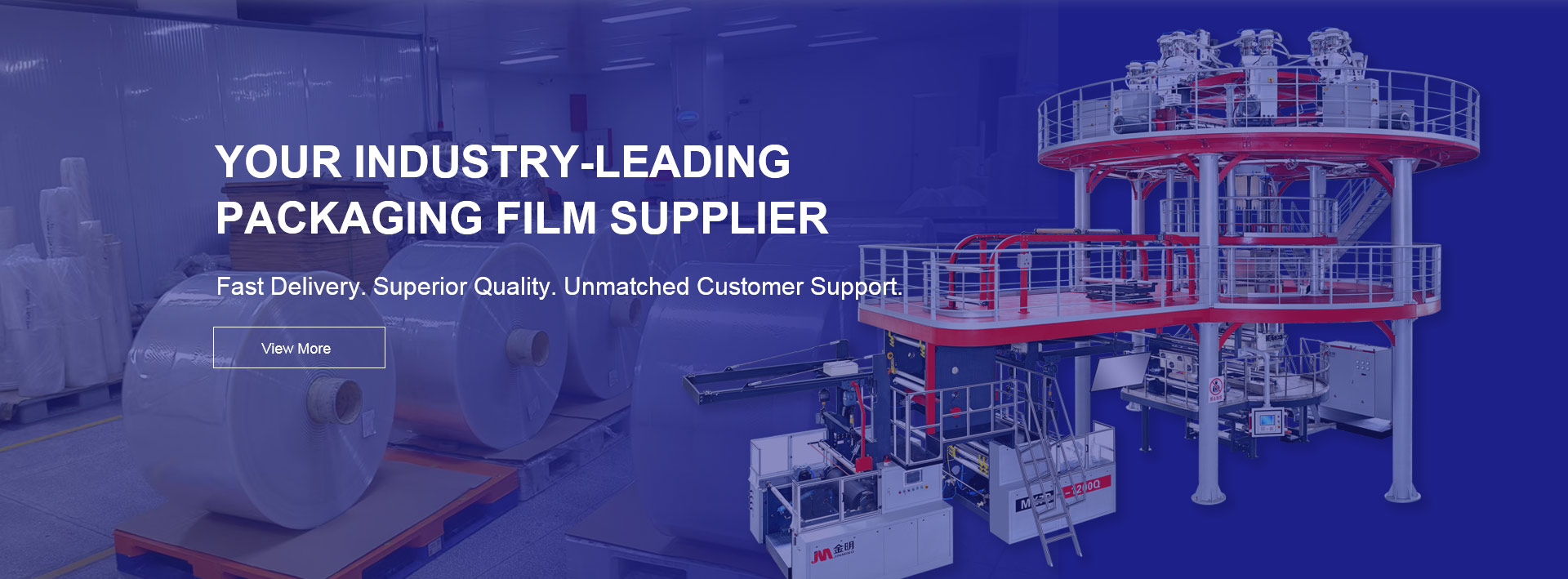
In the packaging and plastic film industry, understanding film strength and puncture resistance is essential to ensure material durability and consistent product performance. These properties directly influence how films behave during transportation, storage, and usage. Manufacturers such as JINBORUN, a professional producer of cast and blown film lines, provide advanced equipment designed to enhance and test these material properties precisely.
Film strength refers to the ability of a plastic film to resist deformation and failure under applied force. It includes tensile strength, elongation, and tear resistance, all of which indicate how well a film can endure mechanical stress. To measure this property, standardized tests are used to simulate real-world stress conditions.
| Test Type | Standard | Purpose |
|---|---|---|
| Tensile Strength | ASTM D882 / ISO 527 | Measures the maximum stress the film can withstand before breaking |
| Elongation at Break | ASTM D882 | Indicates flexibility and ductility |
| Tear Resistance | ASTM D1922 | Evaluates resistance to tear propagation once the film is punctured |
During tensile testing, a sample strip is clamped at both ends and pulled at a constant rate until it breaks. The testing machine records the load (N) versus elongation (%) to generate a stress-strain curve. From this curve, parameters such as tensile modulus, yield strength, and breaking strength are determined.
Interpretation:
A higher tensile strength indicates greater resistance to stretching.
Higher elongation at break means more flexibility and toughness.
Films used in stretch wrapping or vacuum sealing typically require a balance of both.
Puncture resistance evaluates a film’s ability to withstand penetration from sharp or pointed objects. This property is crucial for films used in packaging, agriculture, or industrial wrapping where mechanical impact is common.
Ball Burst Test (ASTM D3420):
A hemispherical probe pushes against a clamped film until rupture occurs.
The test measures both force (N) and energy (J) required to puncture the film.
Suitable for flexible packaging, agricultural films, and protective membranes.
Dart Drop Test (ASTM D1709):
A weighted dart is dropped from a specific height onto the film sample.
The energy absorbed before failure indicates the impact resistance.
It reflects the film’s real-world performance under impact conditions such as dropping or stacking.
Instrumented Puncture Test (ISO 7765-2):
Uses computerized data acquisition to record puncture energy, force, and displacement simultaneously.
Provides detailed mechanical profiling for R&D and production quality control.
| Parameter | Impact on Puncture Resistance |
|---|---|
| Film Thickness | Thicker films generally provide higher resistance |
| Polymer Type | LDPE and LLDPE films offer superior puncture resistance compared to PP or PET |
| Additives | Impact modifiers and toughening agents enhance resilience |
| Orientation | Biaxially oriented films (BOPP, BOPET) exhibit different puncture behaviors along axes |
Modern laboratories and film manufacturers rely on advanced testing systems to ensure repeatable and accurate results. The testing process generally involves:
Sample Preparation
Cut film specimens to standard dimensions, avoiding wrinkles or flaws.
Condition samples at 23°C and 50% relative humidity for at least 24 hours before testing.
Calibration and Setup
Use a universal testing machine (UTM) with load cells ranging from 10 N to 1 kN depending on film strength.
Ensure grips are aligned to prevent slippage or uneven stress distribution.
Testing Procedure
For tensile tests, apply load at a constant speed (typically 500 mm/min).
For puncture tests, select probe diameter and speed according to the target standard.
Record force, displacement, and failure point automatically through data acquisition software.
Data Analysis
Calculate tensile strength (MPa) = Maximum Force / Cross-sectional Area.
Compute puncture energy (J) = Area under the force-displacement curve.
Use results to adjust resin formulations or processing parameters.
Tip: Combining tensile and puncture data gives a comprehensive understanding of film performance, guiding material selection for heavy-duty packaging, lamination films, or barrier applications.
Manufacturers seek to improve film toughness without compromising clarity or flexibility. JINBORUN, a leading supplier of plastic extrusion and film-casting machinery, offers high-performance lines that optimize polymer orientation and control cooling rates—factors that directly enhance film strength and puncture resistance.
Precision Extrusion Control: Ensures uniform film thickness, preventing weak zones that reduce puncture resistance.
Multi-layer Co-extrusion Systems: Allow customized barrier and mechanical properties for each layer.
Automated Testing Integration: Machines can be equipped with in-line film tension monitoring and puncture test modules for real-time quality control.
Custom Engineering Support: JINBORUN provides professional guidance on test standards, material selection, and product design optimization.
| Industry | Application | Required Property |
|---|---|---|
| food packaging | Vacuum-sealed bags, wrapping films | High tensile and puncture strength |
| Agriculture | Mulch films, greenhouse covers | UV stability and puncture resistance |
| Industrial Wrapping | Pallet stretch film | High elongation and impact tolerance |
| Medical Packaging | Sterilization pouches | Controlled tensile modulus and durability |
By integrating advanced extrusion technology and precise testing, JINBORUN helps clients achieve superior product consistency and compliance with international quality standards.
Measuring film strength and puncture resistance is essential for assessing product durability and ensuring reliable performance in end-use applications. Through standardized testing methods such as ASTM D882, D1709, and ISO 7765, manufacturers can accurately evaluate film properties and make data-driven adjustments in production.
Partnering with experienced suppliers like JINBORUN allows companies to implement precise testing and processing technologies that enhance mechanical performance, reduce material waste, and strengthen market competitiveness. Whether for food packaging, industrial wrapping, or agricultural applications, robust film strength and puncture resistance are the foundation of long-lasting and safe packaging solutions.